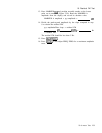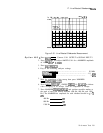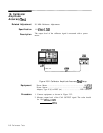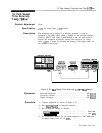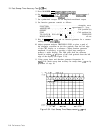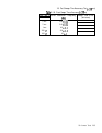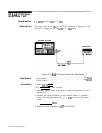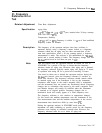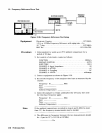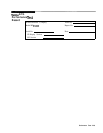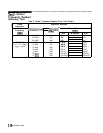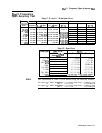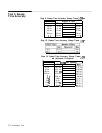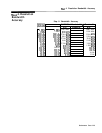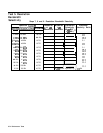
21. Frequency Reference Error
Test
21. Frequency
Reference Error
Test
Related Adjustment
Time Base Adjustment
Specification
Aging Rate
<l
x 10eg/day and
~2.5
x
10m7
year; attained after 30 days warmup
from cold start at
25°C.
Temperature Stability
<7
x
lo-’
0” to
5E9’C.
Frequency is within 1 x
lo-”
of final stabilized
frequency within 30 minutes.
Description
The frequency of the spectrum analyzer time base oscillator is
measured directly using a frequency counter locked to a frequency
reference which has an aging rate less than one-tenth that of the
time base specification. After a 30 day warmup period, a frequency
measurement is made. The analyzer is left undisturbed for a
24-hour
period and a second reading is taken. The frequency change over this
24-hour
period must be less than one part in
10’.
Note
This test requires that the spectrum analyzer be turned on (not in
STANDBY) for a period of 30 days to ensure that the frequency
reference attains its aging rate. However, after aging rate is attained,
the frequency reference typically attains aging rate again in 72 hours
of operation after being off for a period not exceeding 24 hours.
Care must be taken not to disturb the spectrum analyzer during the
24-hour
test interval, since the frequency reference is sensitive to
shock and vibration. The frequency reference should remain within
its attained aging rate if the instrument is left on, the instrument
orientation with respect to the earth’s magnetic field is maintained,
and the instrument does not sustain any mechanical shock. Frequency
changes due to orientation with respect to the earth’s magnetic field
and altitude changes will usually be nullified when the instrument
is returned to its original position. Frequency changes due to
mechanical shock will usually appear as a fixed frequency error.
The frequency reference is also sensitive to temperature changes;
for this reason the ambient temperature near the instrument at the
first measurement time and the ambient temperature at the second
measurement time should not differ by more than
1°C.
Placing the spectrum analyzer in STANDBY mode turns the
instrument off while continuing to provide power for the frequency
reference oven, helping to minimize warmup time. However, the
frequency reference must be on to attain its aging rate.
Performance Tests 2-67



